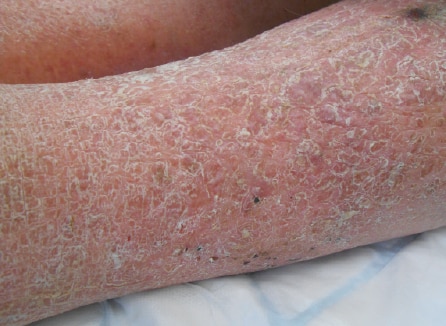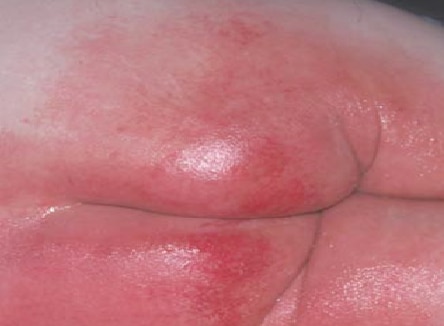Get full access with a free account
Benefits of the Coloplast® Professional Educational platform
- Get full access to all educational content, events and resources
- Track your progress
- Share content with your collegues
- Share supporting material with your patient
Introduction
The skin’s most important function is to protect our body from harm. For example, the skin protects us from trauma, toxins, ultraviolet light and microorganisms. It also keeps us from getting dehydrated and helps our body maintain the right temperature.8,18 In the next section, we examine the three different layers of skin – what each layer does and why it’s important.
The three different layers of skin
The skin has three layers:
- the epidermis
- the dermis
- the subcutaneous tissue
What is the epidermis?
The epidermis is the visible part of the skin – its outermost layer. The epidermis is relatively thin, ranging in thickness from 0.05 mm on our eyelids, to 1.5 mm on the palms our hands and the soles of our feet.8
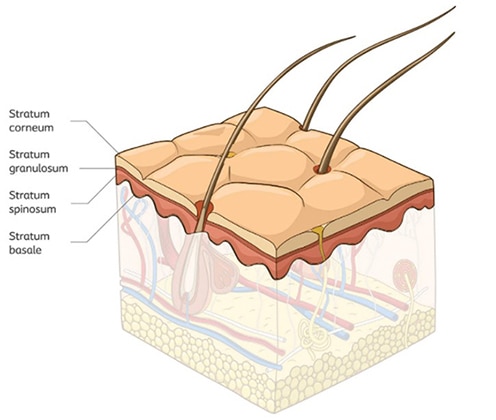
What does the epidermis do?
The epidermis has three types of cells, each with a specific function:
- Keratinocytes: The majority of the cells in the epidermis (95%) are keratinocytes. These cells retain moisture, which helps the skin act as a barrier.33
- Melanocytes: These cells give skin its colour, or pigment. They also protect the skin from ultraviolet (UV) light.33
- Langerhans cells
These cells are a part of the immune system. They protect the body from potential allergens, bacteria and toxic substances by triggering an immune response.10,33
The three types of skin cells in the epidermis
These cells each play a role in the epidermis’ three vital functions:
- to act as a barrier;
- to control water loss; and
- to protect our bodies from UV light, bacteria and allergens.18
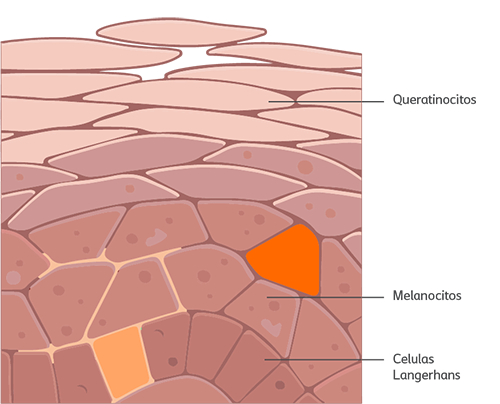
Why is it important?
The epidermis is a highly specialised structure that adapts to the world around us. It provides a physical and chemical barrier that protects the body by:
- preventing foreign substances from entering the body; and
- triggering the body’s immune system when any pathogens break through the barrier.18,26
What is the dermis?
The dermis is the middle layer of the skin. It’s approximately 15-40 times thicker than the epidermis. The dermis contains nerve endings; blood vessels; and skin appendages, such as hair follicles, sebaceous glands and sweat glands.4,33
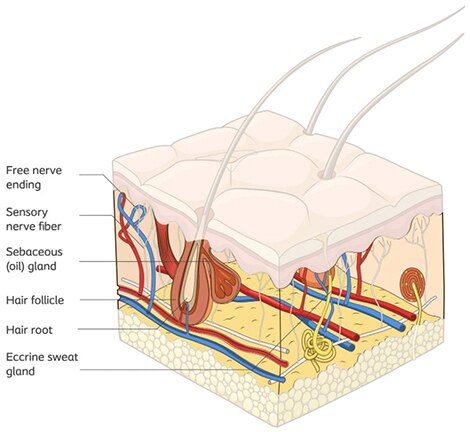
What does the dermis do?
The dermis is responsible for many of the skin’s important functions. For example, it’s where we feel sensation, such as pain and temperature.
The dermis also contains the glands that secrete sebum, which helps the skin maintain the right moisture balance. And sebum and sweat combine to create an acidic environment on our skin, known as the “acid mantle”.33
Why is the dermis important?
The dermis plays an important role in maintaining the skin’s moisture and pH balance. This balance helps to prevent infection. In full-thickness wounds (wounds, such as pressure injuries, that penetrate all three skin layers), the dermis is lost. That’s why these wounds take a long time to heal because the tissue repair process is so complex.19,25 Once they do heal, the structures within the dermis, such as the sweat glands and hair follicles, are permanently lost.25
Did you know?
When a wound heals, the dermis doesn’t have the same structure and function as it does in undamaged skin. This is because the dermis is replaced by scar tissue.25
What is the subcutaneous tissue?
The subcutaneous tissue, also known as subcutis, is the lower layer of the skin. This layer contains connective and fatty tissue as well as major blood vessels and nerves.33 The thickness of the subcutis depends on several factors, including where it is on the body and the person’s age.
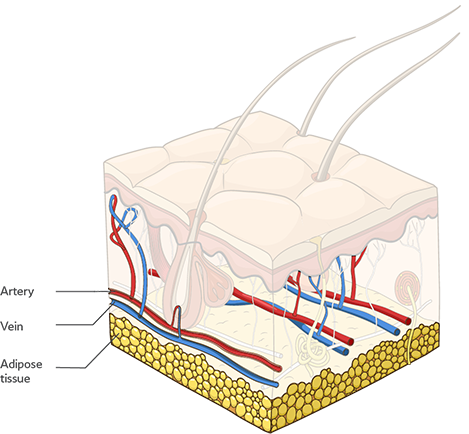
What does the subcutaneous tissue do?
The subcutis insulates our bodies. It acts as a cushion, protecting the internal organs from external pressure. It also plays a role in helping the body retain moisture.33
What is the subcutaneous tissue important?
The subcutaneous tissue is essential precisely because of its role in insulating and padding the body. In this way, it works to protect our bones, muscles, and the organs under the skin from physical damage.
Did you know?
You’ll often be able to see the subcutis at the base of deep wounds, like pressure injuries or traumatic wounds.5
Four factors that affect the integrity of the skin
As we’ve discussed, the skin acts as a protective barrier for the body. It’s a dynamic structure that can adapt to environmental conditions. However, changes to the skin can weaken the barrier and leave the body open to infection.
In this section, we’ll take a look at the four most important factors that can affect the skin barrier.
Factor 1: Damage to the epidermis
The epidermis plays an important role in keeping out harmful substances. However, if the skin becomes dehydrated, the cells in the epidermis shrink. This causes the epidermis to crack, which breaks down the skin barrier. Harmful substances can then enter the body through those cracks. The skin can lose its ability to retain moisture, and the epidermal barrier can be damaged.18

Factor 2: Age
Aging affects all three skin layers in the following ways:
- The epidermis barrier function declines, making the skin more vulnerable.18
- As we get older, the amount of collagen and elastin fibres in our skin reduces. This makes the dermis thinner, which decreases skin elasticity and increases the risk of skin tears.2,18
- The subcutis also gets thinner as we age. This means we have less protection against mechanical injuries. Our cells don’t reproduce as quickly, and the rate of sebum secretion decreases as well. All of this leads to delayed healing and an increased risk of infection.18,27
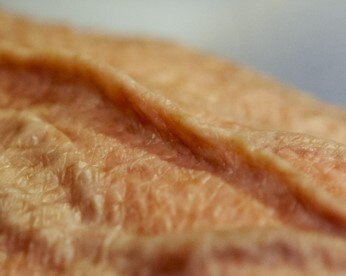
Factor 3: pH levels
As we discussed in the previous section, the skin’s acid mantle helps to maintain the right pH balance on the skin. This, in turn, keeps bacteria levels low.18,33 The skin’s acidic pH, humidity and natural cleansing processes all help to maintain the skin’s barrier function and integrity.18 If the skin loses its acidity, this can make the skin vulnerable to damage and infection.18
Factor 4: Moisture
Maintaining the right moisture balance in the skin is important part of preserving the skin’s integrity. If the skin is too moist or too dry, it can damage the epidermis. For example, dry skin often itches. Scratching dry skin can damage the skin’s protective barrier. Dry skin also negatively affects the skin’s pH balance (see Factor #3 above). The combination of these factors increases the risk of skin infection.29
At the other extreme, exposing the skin to too much moisture for an extended period of time can cause ‘moisture-associated skin damage’ (MASD). MASD decreases the skin’s ability to protect the body.
This is one of the reasons why it’s is important to manage the level of moisture in a wound. To learn more about how to do that, visit the exudate management section.
